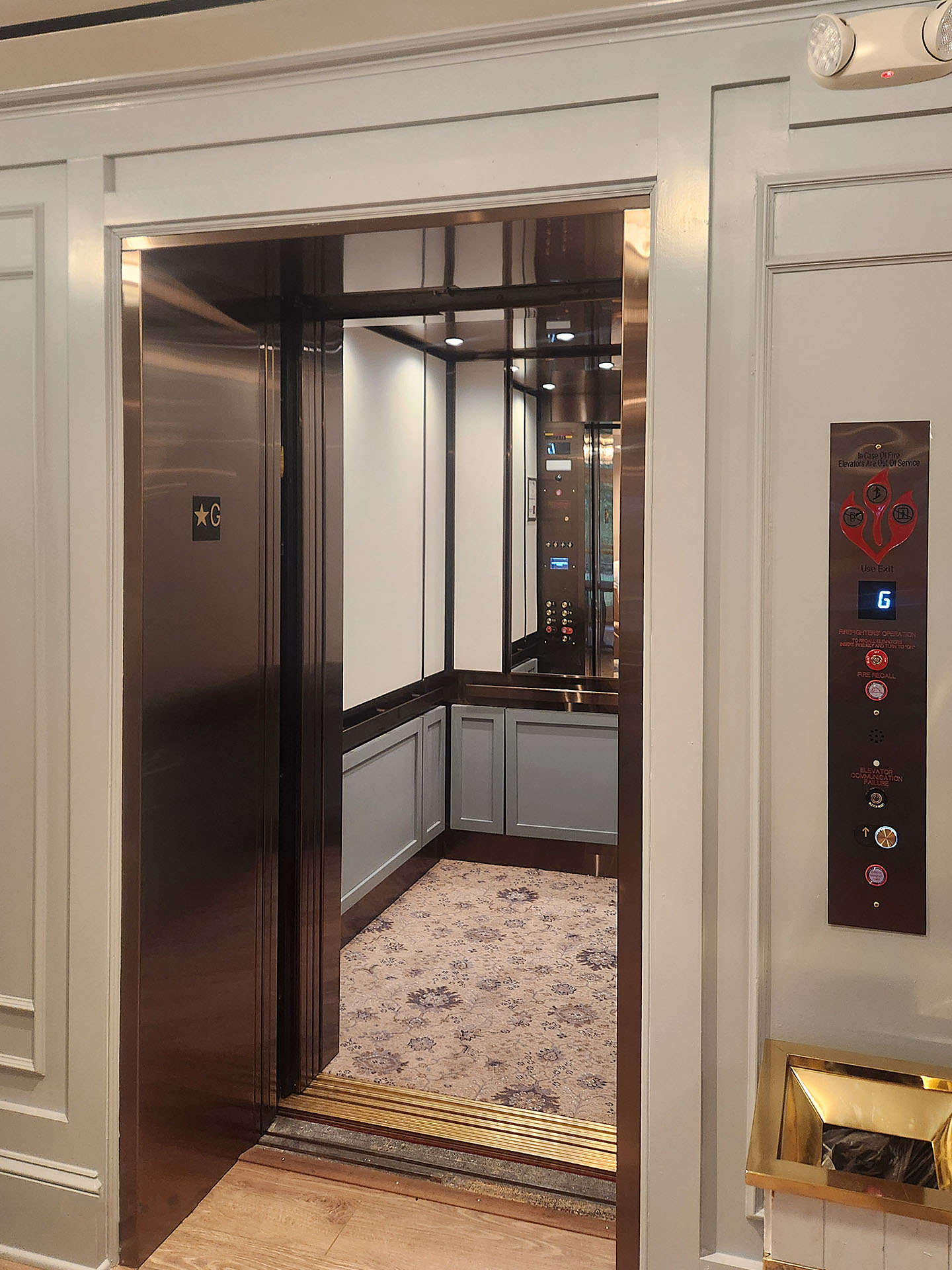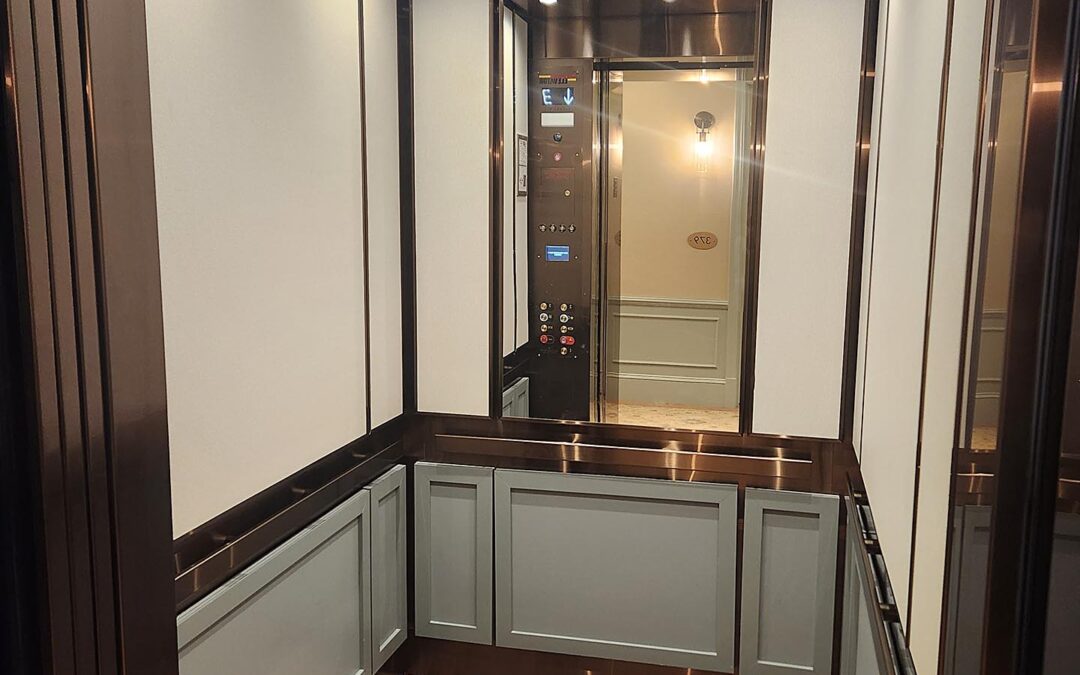Elevator Modernization – When is it time? As a building owner or property manager you know your elevator is getting older. However, the years can stack up quickly and faster than you think. Suddenly your trusty elevator may be turning 25, 50 or 100 years old. As the calendar pages turn, it seems to run fine. As evidence, every time it breaks down your elevator mechanic manages to resuscitate the old machine and get it going again. But last month, after wrestling with finding parts and barely managing the repairs, the mechanic comes to you with the a radical recommendation…modernize “Old Faithful.”
Just one glance at the repair cost and the technician’s earnest eyes and you immediately wonder what an elevator modernization is exactly and if there are any benefits to you and your riding public. Weighing the factors means knowing the facts because it may be time to bite the bullet and schedule an update.

First, a modernization does not necessarily mean redoing the aesthetics seen by the public but often does. The interior of the elevator car, lobby, hall calls and door openings are not the real goal, safety is. And that can often mean updating buttons and the cab interior. But the visible finishes are not the main goal of a modernization. An elevator modernization means replacing the key components that make your elevator run with parts that meet current codes and utilize current technology for safety of the riding public.
Components that are typically replaced in a full elevator modernization include:
Controller: This is the electronic brain that manages all the other components. Real old elevators have mechanical relays and contacts, while current controllers use solid-state electronics. Time and corrosion can hurt the function of the mechanical relays and even harm early microprocessor systems that may not be supported anymore. That means parts are hard or impossible to find. But it goes deeper as the pool of technicians with expertise in the old systems are diminishing. Not to mention the lack of software or diagnostic tools found in old systems and that can make your elevator run poorly or less efficiently than modern systems.
Power Unit (hydraulic): This is the pump/motor/valve assembly in a hydraulic system inside the tank. Newer valves are an improvement because there are fewer moving parts, meaning they require less maintenance and are easier to adjust. They also function better at temperature extremes and offer increased efficiency of the elevator. Ultimately, a well functioning hydraulic unit saves you money as operating and repair costs are reduced.
Hoist Machine or Motor (traction): This is the component that moves the ropes, to move the car up and down. Updating the motor at the same time as the controller will provide better travel times, smoother operation, fewer shutdowns, less maintenance and better efficiency.
Fixtures: This is all the buttons, including the car operating panel, hall stations and position indicators in the hallways. Older fixtures, especially in the car, may not have all the features that current code-compliant fixtures do such as ADA approved communication. Also, the button panel may not have proper button sizes, locations and dimensions. If you have a very old unit, the bulbs may be incandescent. LED lights will provide a small amount of energy savings, but will last much longer, saving replacement cost.
Door Equipment: This includes the door operator, clutch, and pick-up rollers. A loud opening and closing door could mean that significant wear and tear has occurred and an overhaul needs to take place. There are motors, belts, wheels and gears that turn to open elevator doors and these wear out. Quality routine maintenance can keep them working for a long time, but if they have been neglected, full replacement (modernization) may be needed. Also, safety regulations are updated periodically. Current codes require door restrictors, which old elevators often lack. To make your elevator doors, safer a modernization should take place.
Safety: The overriding goal of any elevator is to provide safe travel floor to floor. If your elevator is not providing a safe experience for your users it is time to modernize.
Despite the costs of an elevator modernization with a successful project you will see:
Elevator Modernization
Improved Reliability and Uptime
-
Fewer breakdowns and call-backs – new controls, wiring, and components reduce nuisance shutdowns.
-
Consistent performance – no more slow starts, random stops, or door malfunctions.
-
Predictable operation that minimizes disruption for tenants and visitors.
Enhanced Safety and Code Compliance
-
Meets the latest elevator codes (ASME A17.1 / CSA B44).
-
Upgraded door protection with infrared light curtains instead of mechanical edges.
-
Modern emergency lowering, fire service operation, and seismic compliance.
-
Better fault detection and diagnostics improve safety and service response time.
Energy Efficiency
-
Variable frequency drives (VFDs) optimize motor performance and reduce power usage.
-
LED lighting and automatic fan/light shutoff save energy when the car is idle.
-
Regenerative drives can even return unused power to the building grid.
Result: Lower operating costs and smaller carbon footprint.
Faster, Smoother Ride Quality
-
New motor and controller systems provide quieter acceleration, smoother stops, and precise leveling.
-
Door operators work more smoothly and consistently.
-
Improves passenger comfort and the professional image of the building.
Better Aesthetics and User Experience
-
New hall and car fixtures (buttons, indicators, displays) modernize appearance.
-
Updated cab interiors improve the look and feel for tenants and guests.
-
Optional touchless or destination dispatch systems enhance convenience and accessibility.
Increased Property Value
-
A modern elevator system is a major asset for leasing and resale.
-
Tenants view reliable, updated elevators as a mark of a well-maintained building.
-
Reduces liability and improves building marketability.
Easier Maintenance and Future-Proofing
-
Replacement parts are readily available for modern systems.
-
Simplified diagnostic tools make service faster and less costly.
-
Systems are non-proprietary (if chosen), allowing multiple service providers in the future.
In Summary
A successful elevator modernization delivers safer, faster, quieter, and more energy-efficient performance — reducing maintenance costs while improving tenant satisfaction and building value. We can help and here is a sample.


Recent Comments